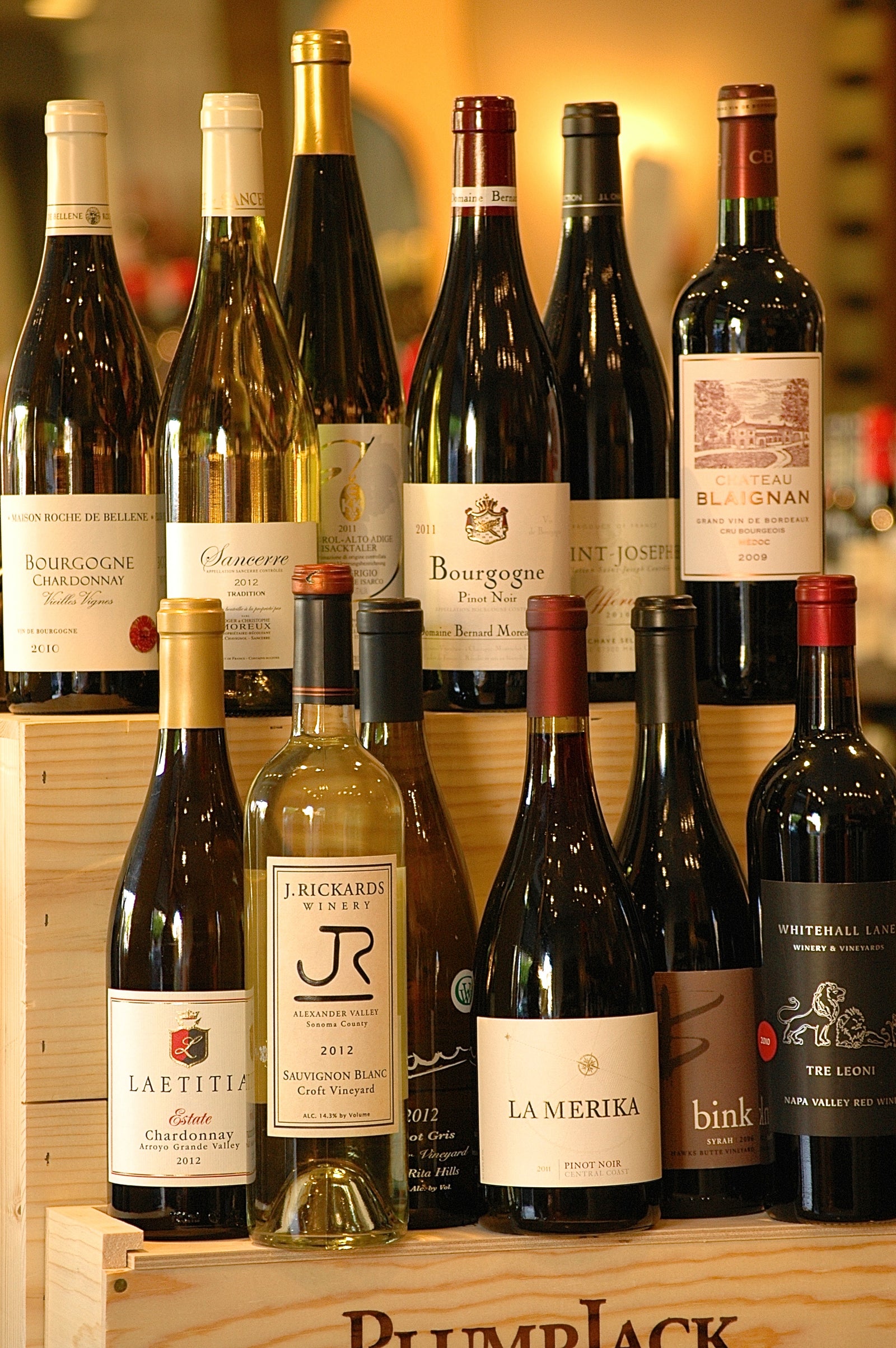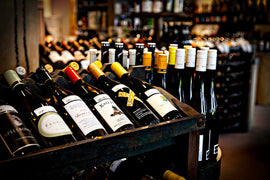Influenced by the cooling effect of the Pacific Ocean, and a combination of summer fog, warm days, and a long growing season, the Carneros wine region is an American Viticultural Area (AVA) in Northern California. Carneros became an official AVA in 1983, due to its unique climate and geography that affect the region's terroir and put a distinctive stamp on its grapes. The Los Carneros AVA adjoins the San Pablo Bay and is the only appellation that straddles two major wine regions, the Napa and Sonoma Valleys. Los Carneros AVA contains approximately 90 square miles of land contained within the rolling hills of the Mayacamas Mountain range. Elevation of land suitable for vineyards varies from 400 feet and lower, and vineyards can be found at elevations close to sea level. Like any other wine area, specific geographical characteristics are defined by soil and weather conditions. As a result of its close proximity to the sea and its near sea-level elevation, the soil composition is a combination of clay and loam. Due to fog and the San Pablo Bay, the climate is cooler than what is found further inland. As a result of these weather patterns, the Los Carneros AVA falls within a regional climate classification known as Region I, the same region found within the vineyards of Burgundy and Germany. We start the New Year with an exploration of wines from this AVA, in the hopes of discovering how its terroir influences wine. The varietal characteristics of our selections shine when grown in these conditions. Fasten your organoleptic seatbelts for the year ahead. It’s going to be a great (and delicious) ride!
2015 WindVane
Chardonnay
Los Carneros, California
2012 Truchard Estate
Tempranillo
Los Carneros, California
The history of Carneros is inextricably linked to that of the nearby mission towns of Northern California. By 1832, outposts had been established in Napa, Suisun, Santa Rosa, and Petaluma. In 1834, the Mexican government moved to secularize all California missions, and Mariano Guadalupe Vallejo, Military Commander and Director of Colonization of the Northern Frontier, arrived in Sonoma, along with ten families of would-be settlers, to take charge of the mission, free the Indians, and distribute the mission lands. Under Vallejo's jurisdiction, hundreds of thousands of acres of land were freely granted to individuals. In practice, the land grants were awarded almost exclusively to Vallejo's relatives or friends. The relative proximity of San Francisco and ease of transport by water played a role in the historic development of Carneros. As early as 1850, workers traveled by barge to Carneros where they cut and loaded hay and grain for transport to San Francisco. Farmers flocked to Carneros to raise sheep and cattle as well as cultivate wine grapes, pears, plums, apples, and apricots. The name Carneros - Spanish for sheep - refers to the many sheep ranches that dotted the hills. Grapes played a prominent role in Carneros agriculture and noted wine historian William Heintz of Sonoma contends that Carneros may in fact be the second oldest vineyard area in northern California. In the late 1830’s Jacov Leese (Vallejo’s son-in-law) planted a small vineyard on the Huichica grant. In the mid-1850’s William H. Winter of Indiana purchased 1,200 acres of the Huichica Rancho from Leese and by the early 1870’s, had not only one of the largest vineyard holdings in the area, but had also built the first winery in Carneros, Winter Winery. While the wine industry thrived in Carneros in the mid-1800’s, it came to a grinding halt by the turn of the century. The combination of phylloxera in the late 1870’s and 1880’s and Prohibition (1919-1933) virtually destroyed the fledgling industry. In 1935, following the repeal of Prohibition, John Garetto established the first post-Prohibition winery in Carneros (the present site of Bouchaine Vineyards). Shortly thereafter, Andre Tchelistcheff and Louis M. Martini pioneered the rebirth of Carneros by establishing it as a cool climate viticultural region. The 1960’s heralded a new wave of vineyard development begun by Beaulieu Vineyards and growers Rene diRosa of Winery Lake Vineyard, Ira Lee, and the Sangiacomo family. The ground breaking for Carneros Creek Winery in 1972 signaled a new era of winery development in Carneros that continues today. The 1980’s were marked by skyrocketing development as hundreds of acres of land were planted to vineyard.
WindVane is the creation of Steven Urberg, long-time winemaker for Gloria Ferrer, a sparkling wine producer in the Carneros region of Sonoma County. After 20 years of walking Gloria Ferrer’s vineyards, Steven was continually fascinated by the grapes that came from the windiest, steepest plot with the thinnest soils. These grapes had the highest acidity, the purest character, and the greatest flavor expression, so he decided to make them into still wines. Gloria Ferrer’s unique property has an East facing exposure with a mountain range directly alongside the West side of the vineyards. The mountains provide altitude, shallow rocky soils, and shade from the intense afternoon sun. They also serve to funnel the intense Pacific Coast breezes directly onto the vineyards. For Windvane Chardonnay, the vines selected are challenged throughout the growing season. They face the natural elements of a cooler marine layer in the mornings and afternoons, and intense wind which results in small crops of very slow ripening fruit that produce intense character. For the 2015 Chardonnay, grapes from individual vineyard blocks were gently hand harvested at night into small 30# picking boxes in order to bring the fruit into the winery intact and cold. Then they are gently whole-cluster pressed and transferred to a stainless-steel tank for cold settling. The racked juice was inoculated and transferred to French oak barrels (20% new) in our barrel caves for barrel fermentation. About 25% of the wine was allowed to undergo malolactic fermentation to soften the bright acidity of Carneros Chardonnay. During monthly topping the barrels were stirred (battonage) to mix the lees to build the supple mouthfeel of the wine. The wine rested for 9 months prior to bottling. I am hard to please when it comes to California Chardonnays, but this wine is impressive. It has fragrant aromas of baked apples, peaches, crème brulee, lemon curd, pineapple, baking spice, butterscotch, and oak. It is lively on the palate, with layers of fruit flavors, spice, and a hint of honey. The wine’s acidity, minerality, and integrated oak add depth and balance to this medium to full-bodied wine. The winery writes the following to complement their 2015 Chardonnay: “The partial malolactic fermentation and oak aging compliment semi-hard cheeses such as goat Gouda or cave aged cheddar with pepper pineapple jam, add herb roasted macadamia nuts to round out your cheese board. Pairs well with a variety of main courses including grilled garlic and saffron prawns, savory Dungeness crab bread pudding, adobo rubbed chicken with salsa verde, or citrus grilled pork tenderloin with orange marmalade glaze.”
The 2016 WindVane Carneros Chardonnay $26.99/bottle, $291.50/case.
In 1972, while still in the Army, Tony Truchard, along with his wife Jo Ann and family, arrived in Herlong and had to report to headquarters at the Presidio in San Francisco. After the meeting, Tony suggested taking a drive through the Napa Valley. Upon seeing all the vineyards, Tony thought it would be interesting to buy some land, plant a vineyard, and then return to Texas to practice medicine. He used his savings to purchase an abandoned prune orchard in Carneros, in the southernmost part of Napa, that was mere pastureland at the time. Today, the Truchard Estate Vineyard encompasses 383 contiguous acres, of which 270 acres are planted (roughly 80% sustainably grown, 20% organically Grown). The vineyard is a series of hills and valleys, and contains a variety of soils: clay, shale, sandstone, volcanic rock and ash. The various combinations of terrain, geology, and marine-moderated temperatures provide unique wine growing conditions. Currently the vineyard grows over 10 different grape varieties, making it one of the most diverse estate vineyards in California. Truchard’s Chardonnay, Roussanne, Pinot Noir, Syrah, Merlot, Zinfandel, Cabernet Sauvignon, Cabernet Franc, Tempranillo, Malbec and Petit Verdot are all estate grown. Only 20% of the grapes from the Truchard Estate Vineyard are reserved for Truchard wines. In 1998, two acres of Tempranillo were planted on an isolated knoll in the southern part of the Truchard Estate Vineyard. The vines grow in volcanic soils and benefit from the cool Carneros temperatures. Tempranillo is the noble grape of Spain. It is the predominant varietal in the wines from the Rioja region, where it is sometimes blended with Garnacha (Grenache), Graciano, and Mazuelo (Carignan). For the 2012 Tempranillo, the fruit was gently destemmed and crushed into an open top fermenter with approximately 20% whole berries. The tank was inoculated with Pasteur Red yeast and punched down twice daily throughout the fermentation. After 14 days of maceration, the lot was pressed and allowed to settle in tank before going to barrel. The wine was aged for 10 months in both French (85%) and American (15%) oak; 25% of these barrels were new. The wine was racked only one time before being bottled in August 2013. This wine is 100% Tempranillo and only 221 cases were produced. It is approachable right now, but will continue to improve over the next 3-5 years. Truchard’s 2012 Tempranillo has a complex nose of ripe cherry, cranberry, and cassis with a hint of Earl Grey tea and cedar. The mouth is layered with flavors of red currants, plum jam, and sweet vanilla. Chalky tannins focus the palate and provide a delicate finish of red fruit, mineral and spice. This wine pairs beautifully with lamb chops, rib-eye steak, pork sausage, smoked game and charcuterie, but works well with vegetable preparations too. It’s an excellent culinary companion to most tapas dishes, as well as mushroom risotto, sheep and goat milk cheeses, and of course, a meat-focused paella.
The 2012 Truchard Tempranillo is $24.99/bottle, $226.70/case.





